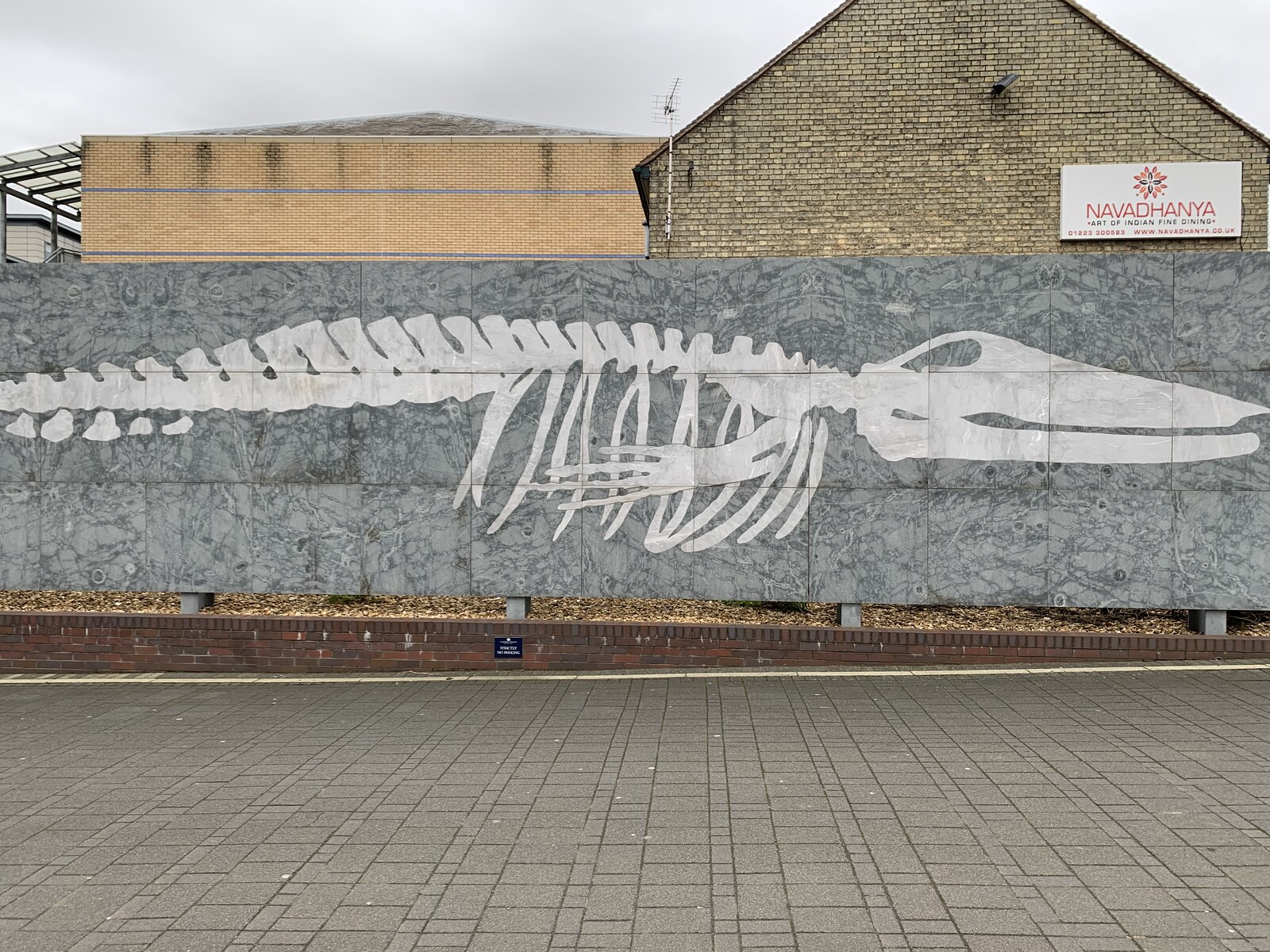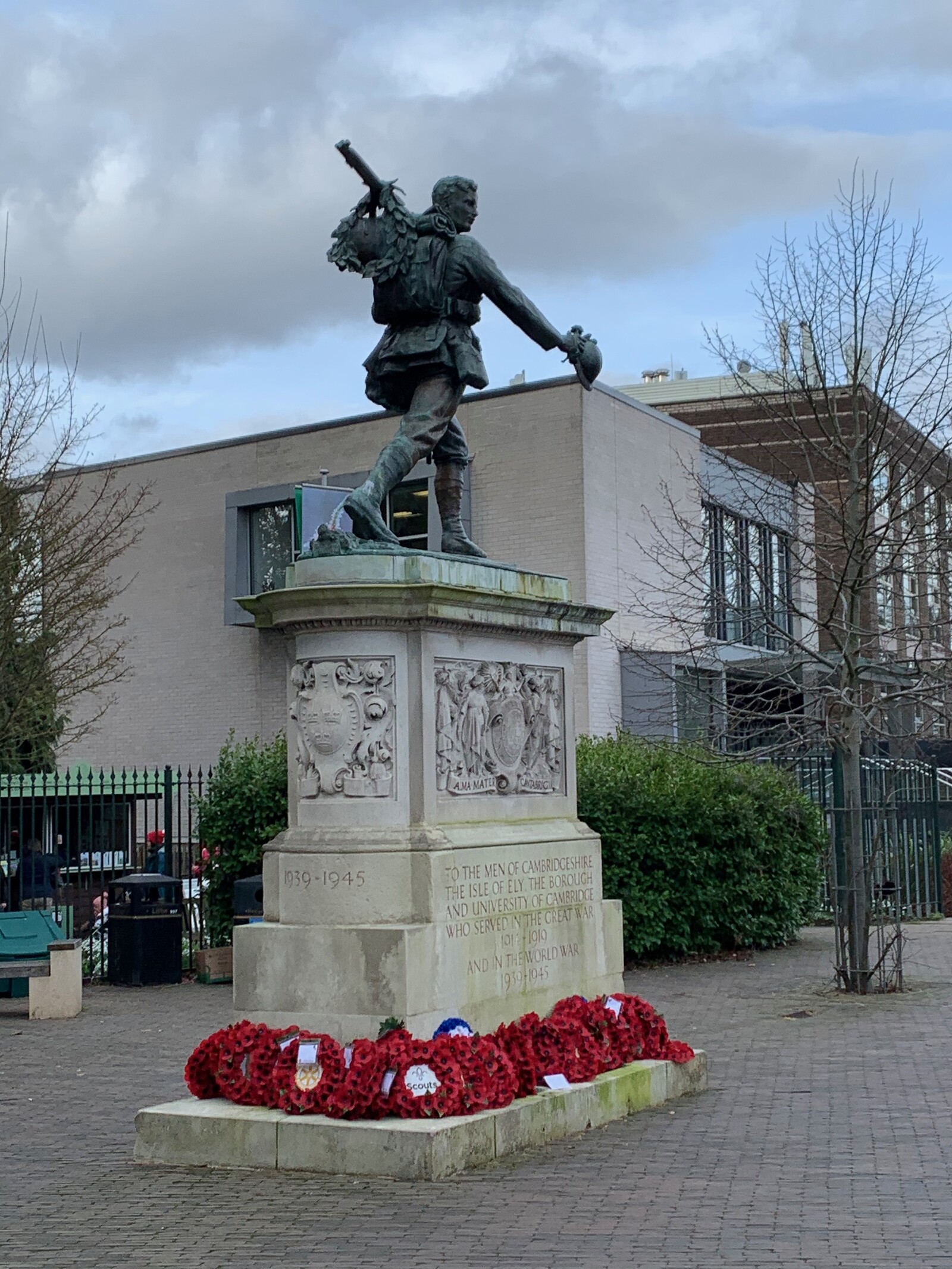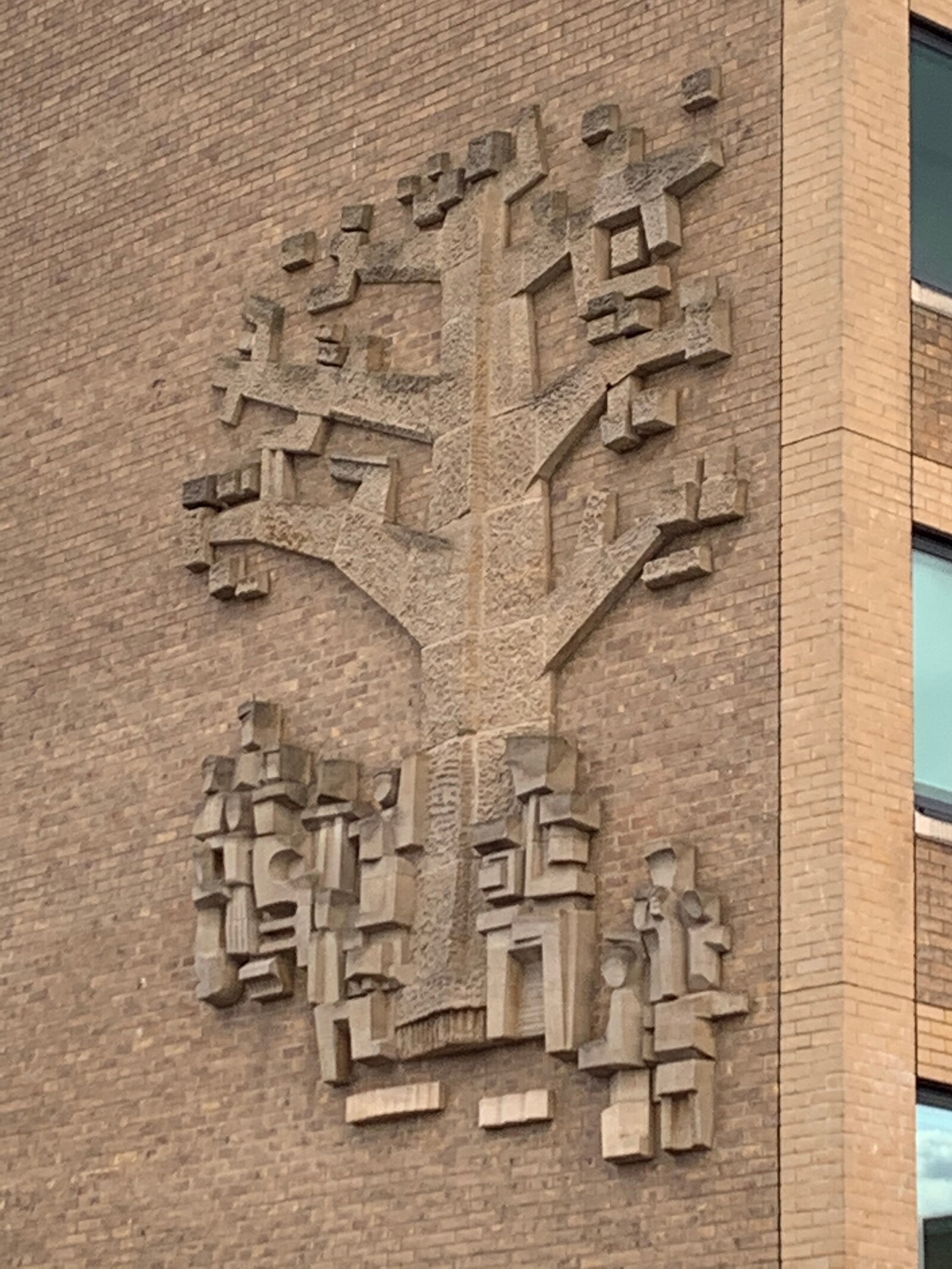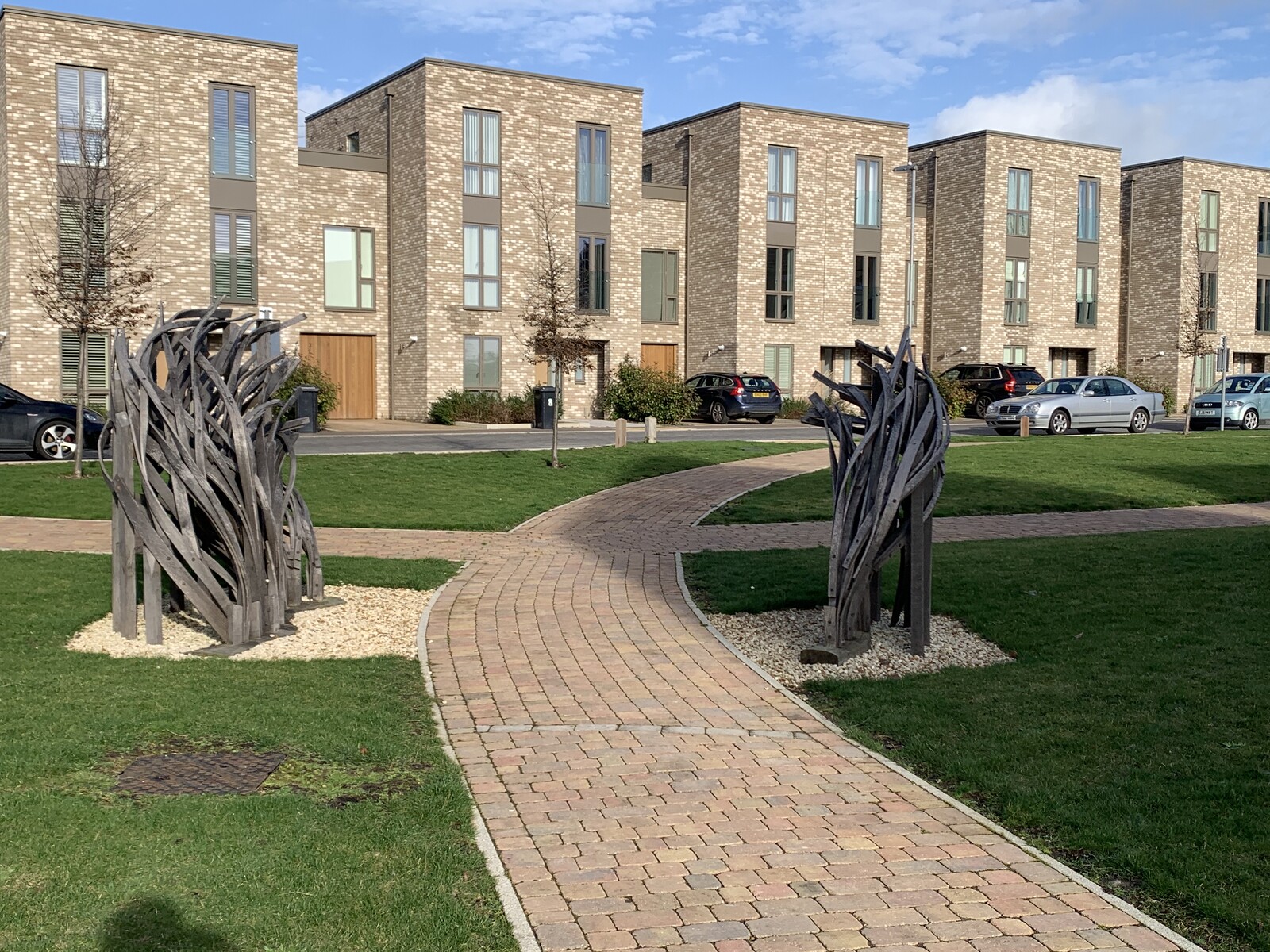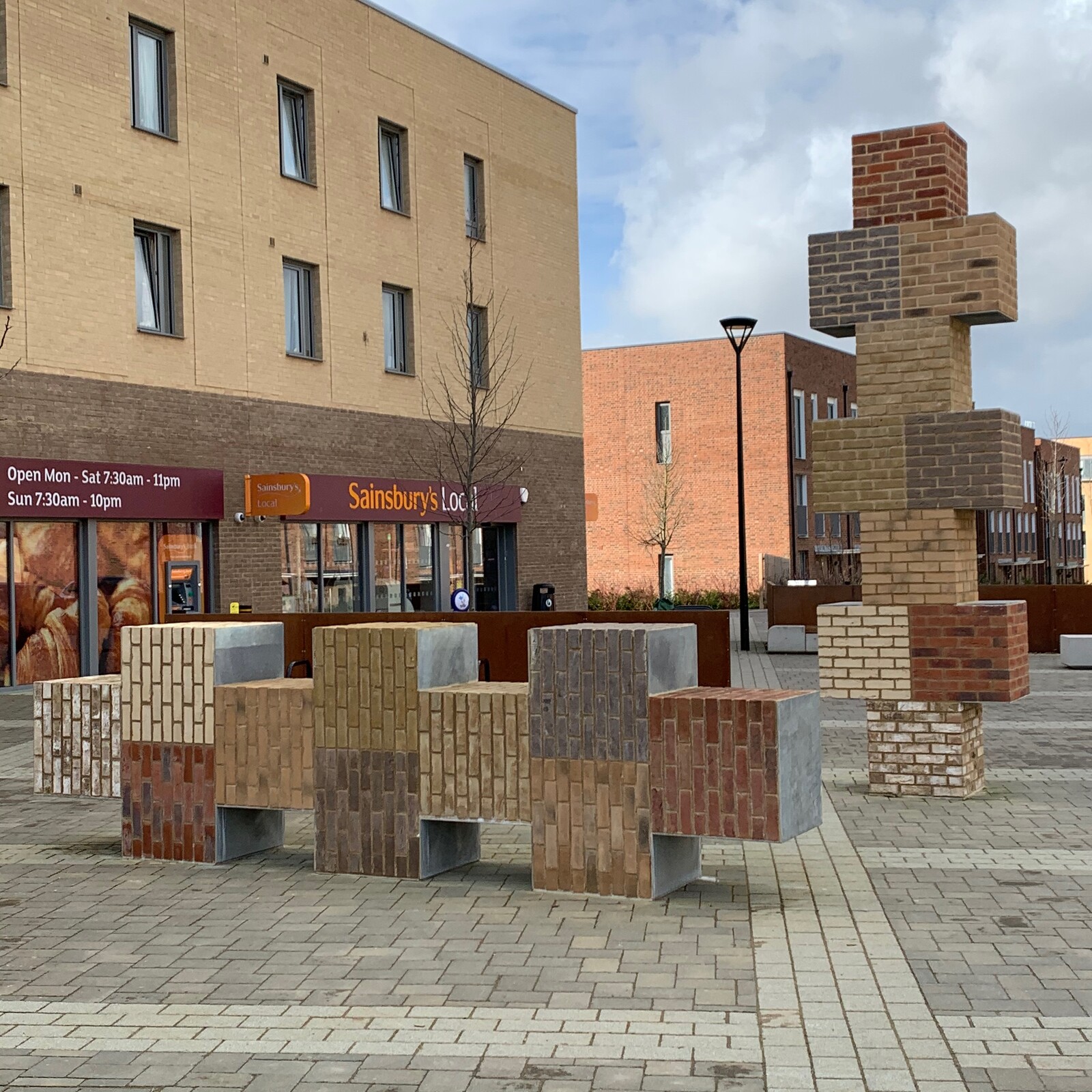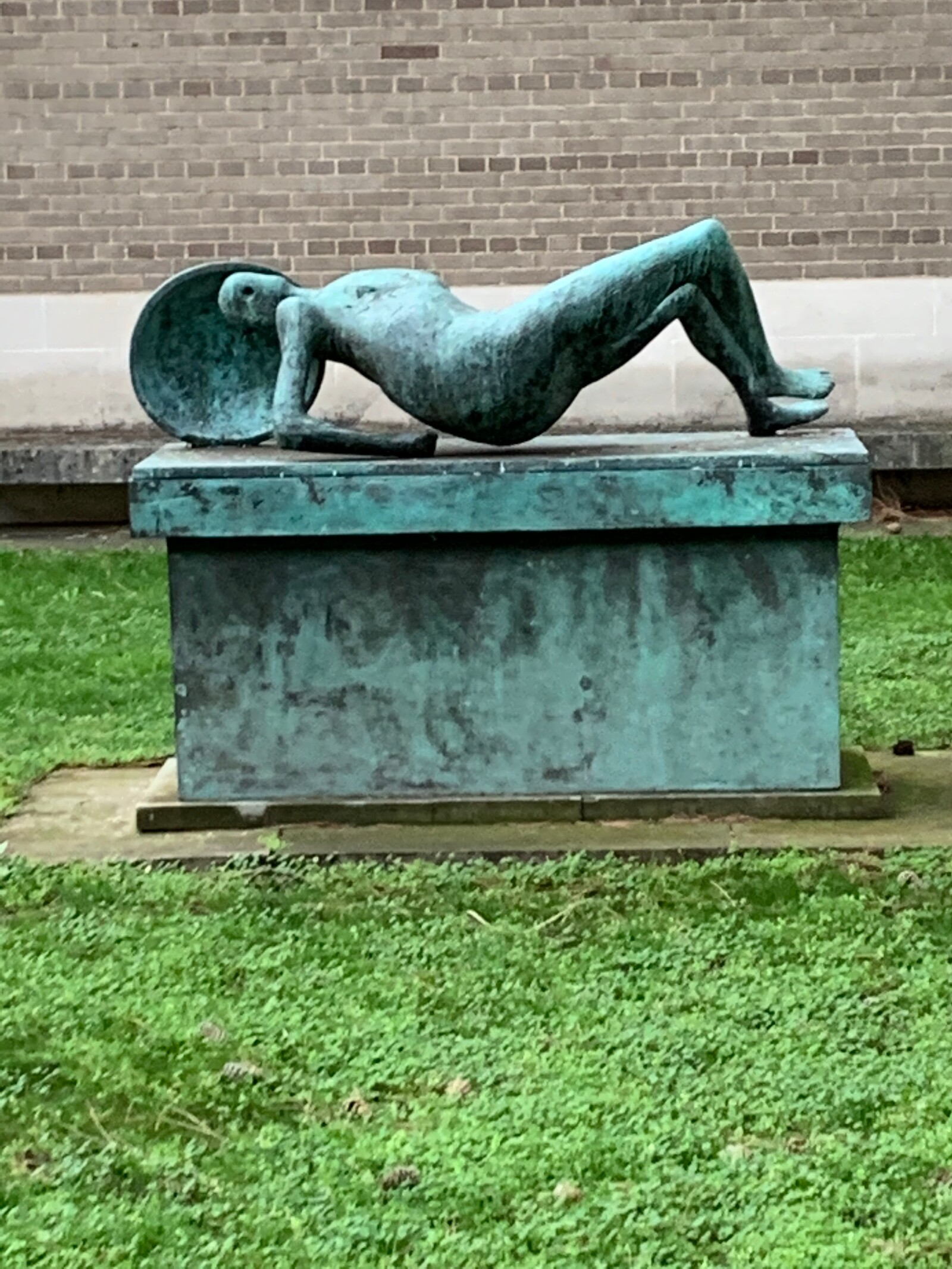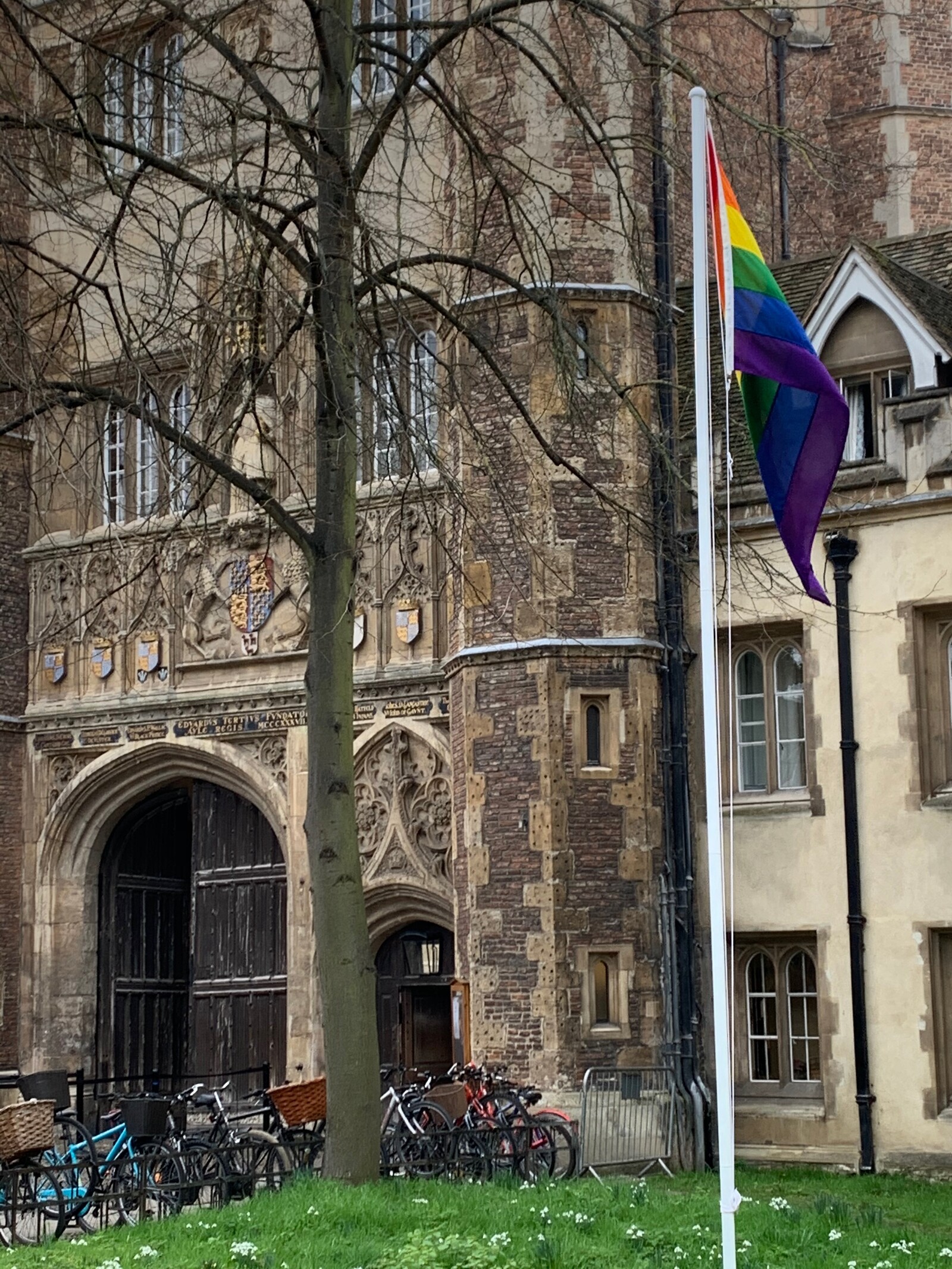In June 2016, a few days after Britain’s EU referendum, I met up with a group of old school friends in Grantchester Meadows, a beauty spot outside Cambridge, England, the city where I lived from my early childhood until I left for university in 1996. Picnicking in this shimmering green dreamland where, “flower-lulled in sleepy grass,” Rupert Brooke experienced “the centuries blend and blur”,1 we watched our kids laugh and tumble near the riverbank, while we grouched about Brexit, reminisced over the long, mildly riotous nights we’d spent drinking here as teenagers, and stole glances at the grey flecks in each other’s hair, the lines that spoked from each other’s eyes. What we didn’t know then, and still can’t truly comprehend now, was that in three summers’ time one of us—my closest boyhood friend A_, who I’d known since I was six years old—would take his own life.
How do we bring back a lost loved one, our own lost past? The short answer is that we cannot. At A_’s funeral service at a woodland burial site a few miles outside Cambridge, our mutual friend David—one corner of a fraternal triangle forged in adolescence, now forever reduced to a single bright point of connection—read from Mary Oliver’s poem “In Blackwater Woods” (1983), which concludes with the lines:
To live in this world
you must be able
to do three things:
to love what is mortal;
to hold it
against your bones knowing
your own life depends on it;
and, when the time comes to let it go,
to let it go.2
None of us there, I think, were ready to put this wisdom into practice. Not then, and perhaps not for a long time yet. Nevertheless, six months later, as the horror year of 2019 ticked over into the first, still hopeful days of 2020, I experienced a powerful need to confront something that I’d ignored, or possibly avoided, for too long: that while Grantchester Meadows remained the same, changeless place of Brooke’s “bosky wood” and “slumberous stream,” much of the landscape of my youth had disappeared. In the years I’d lived in London, and more recently Kent, what had replaced it was a new city—a Neo-Cambridge—that I barely recognized. This wasn’t merely a matter of unfamiliar buildings, but of an unfamiliar sensibility, which I was soon to discover found expression in a curious—and very twenty-first century—form of civic art.
A couple of minutes’ walk from Cambridge station is a pair of public sculptures that I’ve cherished since childhood. One is Robert Tait McKenzie’s war memorial, The Homecoming (1922), a bronze of a striding, demobbed Tommy, his rifle propped carelessly against his left shoulder, his tin helmet swinging from his right hand, as though he might at any moment launch it joyously into the air. Even as a kid, I think I recognized the work’s evasiveness—McKenzie’s returning warrior is a smiling, unblemished youth, not a body in a coffin, or a shell-shocked amputee. But I suspect that’s precisely why, amid the confusion and pain of my parents’ divorce, I nurtured a boyish identification with this figure. He was a reminder that survival was possible, that on the other side of chaos there was something I could call home.
Across the street from The Homecoming is Willi Soukop’s relief sculpture Kett’s Oak (1962-63), which memorializes a very different conflict: a peasants’ uprising against the enclosure of common land in 1549, led by the East Anglian yeoman Robert Kett. Commissioned for the façade of the headquarters of the local construction firm Rattee and Kett (which was set up by a descendant of the rebel leader in the nineteenth century, and in the twenty-first was acquired, then liquidated, by the tanking private finance initiative and construction giant Carillion), the work depicts Kett and his followers gathering beneath a tree known as the “Oak of Reformation,” from whose branches some of these men would later be hanged when their revolt ended in brutal defeat.
I have a vague, perhaps false memory of my father, an art teacher of a leftish bent, relaying this history to me and my sister as he drove us past Kett’s Oak to spend a court-mandated weekend at his house in a village outside the city, although it was only in adulthood that I’d notice the dizzying contradictions of commemorating an uprising against land enclosure on the exterior of a building contractor’s head office. In truth, what first held my attention about this work as I sat in the backseat of Dad’s Mini was Soukop’s bold, blocky figuration, the way the Austrian artist’s stone oak felt both modern and somehow mythic, a twentieth-century Yggdrasil. Alongside McKenzie’s sculpture, it was the beginning of an aesthetic—and political—education.
Homecoming and Kett’s Oak are unlikely neighbors, and illustrate the haphazard way that many cities accrue their public art over time. The reasons behind this are not hard to understand. The winds of civic politics change, and local economies thrive or falter. New neighborhoods are built, and old ones bulldozed or gentrified. What once seemed so important to memorialize—a war, a hero, an industry, an ideal—fades from memory, or becomes a source of embarrassment. Demographics shift, and with them a city’s self-image, and its appetite for art of a particular stripe.
Unlike, say, Münster, Cambridge is not somewhere people associate with public art. It’s best known, of course, for its ancient university, which has long given it a cosmopolitan, politically liberal feel that’s alien to much of Britain. (In 2016, the city voted 73.8 percent in favor of continued EU membership, a figure exceeded only by Edinburgh.) This, though, is not the only thing on which its outlier status rests. Cambridge’s San Francisco-like postmillennial transformation into an international computing and biotech hub—a “Silicon Fen”—has brought unprecedented wealth to this corner of East Anglia, reflected in its eyewatering property prices (alongside Oxford’s, on average the highest in Britain outside London), in its economic divide (a 2018 study revealed that it’s the country’s most unequal city in terms of income distribution), and in its phenomenal rate of expansion (by most measures, it is the fastest growing urban center in the UK).
On Cambridge’s outskirts, where there were once only flat, near-featureless fields, whole new neighborhoods now rise from the earth. Trumpington Meadows, Ninewells, Orchard Park, and the sprawling Great Kneighton, with its signage pointing to housing developments that seem to be named after wellness apps, or superheroes: Halo and Aura, Novo and Paragon. The university is also pushing out into the former farmlands, creating a corridor of futuristic research buildings along the Madingley Road to the far north-west of the city, while on its southern periphery the tired concrete mass of Addenbrooke’s hospital had been subsumed by, or metastasized into, a biomedical campus, where NHS facilities stand cheek by jowl with the half-completed, Herzog & de Meuron-designed global headquarters of the multinational pharmaceutical giant, AstraZeneca. It’s in these edgelands, far from the tourist hotspots of King’s College Chapel and Bridge of Sighs, that Cambridge is quietly turning itself into a de facto sculpture park.
The biggest driver of this is Section 106 planning agreements, whereby proposals for property developments are greenlit by local councils on the understanding that the developer also provides something of public benefit: a playground, say, or a few units of so-called affordable housing, or (and this is the modish option in Neo-Cambridge) a site-specific sculpture. The task of commissioning such works is usually farmed out to a specialist agency, and the city’s Section 106 sculpture boom is dominated by three main players. Scroll through their websites, and you’ll notice a striking similarity in their mission statements, which promise to provide “cultural animation” (The Contemporary Art Society), “cultural placemaking” (FUTURE\CITY), and “projects that define places and involve people” (Commission Projects). Public sculpture is presented as a form of sympathetic magic, which both imbues a new development with quiddity, and makes it come alive.
At the beginning of February this year—a time that now feels very distant—I returned to Cambridge to take a cycle ride through its edgelands, searching for art among the corporate HQs, gleaming lab buildings, and luxury flats. A few, mostly half-hearted attempts have been made to create tourist trails out of the hodgepodge of sculptures in the city center’s open spaces (perhaps the best map is provided in the artist Gavin Turk’s charming, if rather whimsical, 2018 pamphlet The Metaphysical Cyclist: A Tour of Cambridge). However, there’s no corresponding guide to the public art on its periphery. Before I finally located Heather and Ivan Morison’s Bronze House (2017) at Great Kneighton, and Lucy Skaer’s The Barnwell Sentence (2014) at Cambridge Riverside, I spent what felt like hours pedaling through a landscape of deserted Ballardian newbuilds. Did anybody besides the residents—if there were indeed residents—know these works were there?
On one level, the muted promotion of Neo-Cambridge’s Section 106 boom is understandable. Seven million tourists descend on the city each year, but it’s hard to imagine many of them schlepping out to its outskirts for an afternoon’s art appreciation (where are the punts, the honeyed Sir Christopher Wren courtyards, the ice cream stands?). Similarly, locals looking for a fix of contemporary sculpture are much more likely to head to an exhibition at Kettle’s Yard gallery in central Cambridge or the Wysing Arts Centre in nearby Bourn than to a housing development near the A1309. Nevertheless, a question presents itself: if these works are not in the common agora, but in sequestered and privately owned space, just how public is this “public art”?
I say I grew up in Cambridge, but my Mum’s home was, and remains, a 1970s semi in Cherry Hinton, a working-class village turned suburb to the south of the city. (Its incongruously bucolic name derives from its abundance of cherry trees, which create great drifts of pink blossom that blow about its ageing housing estates and dowdy shopping precinct each spring.) Along with the north-westerly neighborhoods of Arbury and Kings Hedges, this used to be Cambridge’s edgeland, and to live here was to feel both proximate to, and very distant from, the privilege embodied by the stately college buildings that dominated the city’s center, or the Victorian townhouses that lined its more prosperous streets.
Still, during the long period of Conservative government from the late 1970s to mid-1990s, Cambridge’s political identity as a holdfast of progressive—even socialist—values in the overwhelmingly Tory South East went some way to mitigating, or at least masking, disparities between town and gown, and the city’s poorer and richer wards. This was no utopia, but it was a place where the public sector was prized, and where the English vice of snobbery felt like it was in retreat, or at least fixed less on income or social class than on ability. An example: at my state comprehensive, my friends—the same group with whom I’d picnic in Grantchester Meadows two decades hence—included the children of everyone from a builder to an economics professor to an hereditary peer. Riding my gaudy hire-bike past this school’s damp, still-familiar sports grounds and out into Neo-Cambridge (looking, and more complicatedly feeling, like a tourist who’d become hopelessly lost), I saw a sign pointing to the “Prestigious Neighbourhood Development” of Ninewells. This phrase is the degraded argot of estate agents, but it also indicates a shift in the city’s collective psyche. In the Cambridge of my youth, prestige wasn’t something that could be bought or sold by the square foot.
One of two sculptures commissioned for Ninewells, Peter Randall-Page’s Confluence (2015) is a Lilliputian granite amphitheater, whose outer steps bracket a smooth central ramp, carved with a network of channels that resemble a river delta, or a branching tree. On wet days, these fill with rainwater, which drains down toward a circular form, where it’s swallowed by a grey plughole, and then by the soil below. Maybe there’s some boyish fun to be had racing marbles down Confluence’s gullies, or exploring what other, more noxious liquids they might accommodate. From my adult perspective, though, this work combines a lazy, deracinated classicism with an even lazier reference to the chalk streams that flowed through Ninewells when it was just a cluster of trees, scrub, and fields, where I’d go to smoke cigarettes with my schoolfriends, and occasionally find a tattered, abandoned porn mag mulching down into the fertile earth.
Like Confluence, Laura Ellen Bacon’s nearby Cluster (2016)—which translates Bronze Age fenceposts found during an archaeological survey of the site into billowing, steamed-wood sheaves of what might be fashionably ancient grain crops, or newly conditioned hair—is also designed to seep politely into the surrounding development. With their natural materials, neutral palettes, and their foregrounding of tepid formal surprise over (anyway anodyne) content, both these works feel like contemporary lifestyle accessories, and offer about as much aesthetic and political education as a scent diffuser. It’s a paradox of public sculptures that the more accustomed to them we are, the more they slip from our conscious sight, becoming the backdrop to the chip-shop lunches of truanting schoolkids, or landmarks where we await a Tinder date, checking our reflections in their dulled, verdigrised bronze. At Ninewells, however, this invisibility appears to be a feature, not a glitch.
Not being seen, not being noticed, is central to two much more successful works a short cycle ride away. Sited next to a supermarket branch in Barrett Homes’ Trumpington Meadows housing development, Keith Wilson’s Hopscotch (2019) is comprised of two brick masses, one horizontal and one vertical, which mimic the grid of the titular kids’ game. There’s a joke, here, about public art’s utility (even a parkour champ would struggle to play hopscotch on Wilson’s towering sculpture), but there’s also one about site-specificity, and how the commissioning process demands that artists adopt what we might call chameleon tactics. The work’s brown, beige, and orange bricks not only match those of the surrounding identikit homes, but also chime with the color scheme of Sainsbury’s corporate livery. Fittingly for a development masterminded by Britain’s biggest house builder, Wilson’s “cultural placemaking” points to just how generic—how much of a non-place—Trumpington Meadows really is.
Ryan Gander’s project The Green & the Gardens (2019), a verdant outdoor space at the Cambridge Biomedical Campus, deals in a second type of invisibility. The artist has spoken about this site as a kind of village common, and while it is replete with cute rustic details (an open gate, a stile, a community noticeboard) its grass is also home to a number of fiberglass tents, whose bold, primary-colored forms light up at night as though they are being illuminated by the torches of unseen inhabitants. Who are these campers? In a city where rough sleeping has more than doubled in the last decade, the answer seems clear enough to me.
Looking at Gander’s glowing shelters—works that trespass beyond the boundaries of aesthetic and political decorum to powerful effect—I got thinking about another, very different public sculpture in Cambridge’s city center. Since 1615, the Great Gate of Trinity College has been topped by a statue of its founder, King Henry VIII. Staring out with cold, unseeing eyes, the stone monarch cradles a gilded orb in his left hand, and brandishes a wooden chair leg in his right—the result, legend has it, of a daring prank played by the Night Climbers, an interwar student society dedicated to scaling the city’s rooftops by moonlight. Overlooking the boujie shopping strip of Trinity Street, this artwork is passed by thousands of people each day, although it’s really only the guided tour groups who pay Henry any mind.
It’s not only stone bodies, though, that too often go ignored on Cambridge’s streets. Shortly before 7 a.m. on December 23, 2019, a homeless woman gave birth to premature twins on a cold pavement outside the Great Gate. Over the last four and three-quarter centuries, an extraordinary roll-call of alumni and fellows have passed through its thick oak doors, among them 6 British Prime Ministers, 34 Nobel laureates, and such figures as Isaac Newton, Lord Byron, Ludwig Wittgenstein, and Jawaharlal Nehru. On that particular December dawn, however, the Great Gate remained firmly shut. Until an early-morning passerby came to the woman’s aid, the only witnesses to the birth were the city’s birds and a stern effigy of a Tudor prince. Media reports were careful not to point an accusatory finger at Trinity, although they noted that it’s the University’s wealthiest college, with published assets of some £1.4 billion, and one of Britain’s biggest landowners. I wonder: When Gander was planning The Green & the Gardens, did he look at Kett’s Oak, a work about who profits, and who suffers, from the enclosure of the world?
Perhaps I’m wrong, and one day visitors will flock to the art on Cambridge’s edgelands. At the very least, a large audience seems guaranteed for Matthew Darbyshire’s sculpture Hercules Meets Galatea (2020)—a clever take on, among other things, “cultural animation” and the exhaustion of classical forms—which is due to be unveiled at the new Cambridge North railway station later this year. And yet, much like the wealth of twentieth-century art by (among others) Henry Moore, Barbara Hepworth, and Philip King that’s hidden behind the high walls of the University’s college gardens, I suspect that most of the nominally public works on the city’s periphery will continue to shrink from broad public view. The reason for this is the unwritten codes of class privilege. Passing through the porter’s lodge of a Cambridge college in order to see, say, an Anthony Caro bronze requires not only the knowledge that it’s there, and that outsiders are free to view it on certain days, but also the confidence that this is somewhere you’d be welcomed, you’d belong. Similarly, Neo-Cambridge—the monied, high-tech capital of pro-EU English “Remainia”—has its gatekeepers, not least our own sense of whether this a place that feels like home.
Back, for a moment, to Trinity’s Great Gate. On February 17, climate protestors from Extinction Rebellion dug up the lawn outside the entrance to the college, in protest against its ties to fossil fuel companies. Reading about this event—this sculpture—back in my study in Kent, I was reminded of three things. One was the artist Roger Hiorns’s unrealized plan to bury a military aircraft beneath a stretch of land owned by Cambridge’s Jesus College—a public, yet wholly invisible artwork that will be titled A Retrospective View of the Pathway. Another was the turned earth of A_’s grave, which I’d visited toward the end of my trip through the new edgelands of the city where he’d lived until his death. A_’s family chose a woodland burial site to honor his work as an environmental scientist, and there’s some fragile solace in the thought that his body will nourish a sapling, which in time will grow into a broad, sturdy tree. The third thing was a passage from Marilynne Robinson’s Gilead (2004), in which the novel’s narrator, a pastor in the winter of his life, reflects on what he calls “the ongoingness of the world,” something I had long failed to acknowledge, and something I still can’t quite accept: “We fly forgotten as a dream, certainly, leaving the forgetful world behind us to trample and mar and misplace everything we have ever cared for. That is just the way of it, and it is remarkable.”3
Rupert Brooke, “The Old Vicarage, Grantchester,” 1912, https://poetrysociety.org.uk/poems/the-old-vicarage-grantchester
Mary Oliver, “In Blackwater Woods” in American Primitive (New York : Little, Brown, 1983), 82.
Marilynne Robinson, Gilead (London: Virago, 2004), 218.
